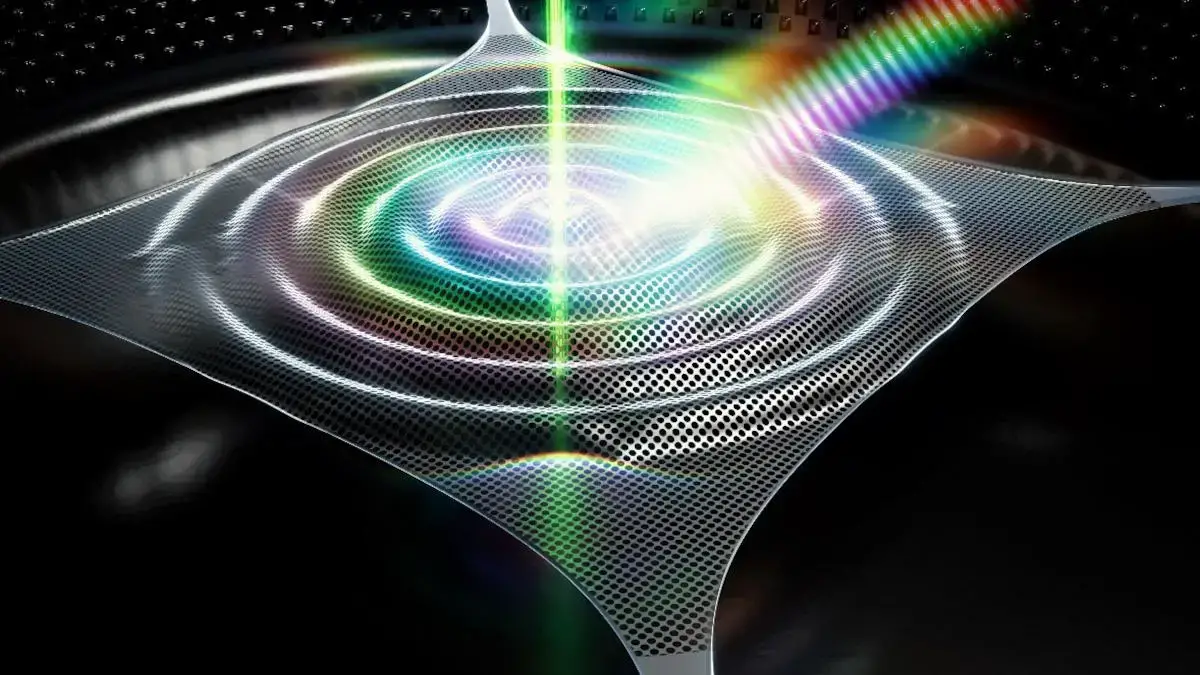Laser-controlled magnetic fields with quantum trampolines open the gates to high-power quantum computers that size is smaller than protons.
The ability to control ferromagnetic fields by using terahertz-laser light makes it possible to create fast computers. Teraherz-laser impulses that drive magnetic fields in a certain direction are the thing that makes it possible to create new and fast computers. Fast binary computers are required for adjusting quantum computers.
Another thing that can make it possible to create new types of microchips is the thing called trampoline sensor. The trampoline sensor is the tool where information is sent to the trampoline layer. And the wave motion will re-transmit that information to the sensors that are around the trampoline layer. This system allows sending all data packages at the same time to all states in the qubit
Every single data segment is marked with a serial number. And that allows the system to remove unnecessary parts of data mass. The serial numbers are also used to reconnect those data segments to the data row and drive them through the quantum system.
"Magnetic spins in YTiO3 are synchronized by THz light, leading to a stronger and higher temperature ferromagnetic phase. Credit: © Jörg Harms, MPSD" (ScitechDaily.com/ Lighting the Path to High-Speed Computing: Terahertz Laser Pulses Transform Ferromagnetism)
"Artist’s impression of the trampoline-shaped sensor. The laser beam that passes through the middle of the trampoline membrane creating the overtone vibrations inside the material. Credit: Sciencebrush" (ScitechDaily.com/Combining Two Nobel Prize-Winning Techniques: A New Microchip Technology)
"An illustration showing a single nanoparticle converting low-frequency red light into extreme-ultraviolet light, which has a very high frequency. Credit: Anastasiia Zalogina/ANU" (ScitechDaily.com/Scientists Use Nanoparticles To “Peel Back the Curtain” Into the World of Super-Small Things)
The next-generation quantum computers can be the size of a proton.
Quantum computers can be the size of protons. The proton size quantum computers can use quantum entanglements between quarks in protons. The problem with these kinds of systems is that information must travel through electron shells and then the quantum fields of the proton.
The problem is how to drive information in that system and out of the system. There is the possibility that photons dive information into the electron, and then that electron will put to the superposition and quantum entanglement with a quark inside the proton. When data is transported in those quarks the system follows the wobbling of the proton's quantum field.
The question is does that kind of thing have enough high accuracy? Another way is to use a quasiparticle (like an exciton). If the system can adjust the size of that quasiparticle it can input data to the quark by decreasing the size of the quasiparticle. And when the information will send back to the sensor by increasing the size of the quasiparticle. That makes it easier to detect information stored in those systems.
The idea is taken from the microparticle that can go in and come back from the super-small things. The quantum yoyo with adjustable size can revolutionize quantum computing.
Quantum entanglement can increase the accuracy of microscopes. And that thing can use to transport information in and out of quarks. But the problem is how to make a so accurate sensor, that it can read the information that is stored in those protons. The same accuracy that a microscope uses can use to send information back and forth in the miniaturizing system.
https://scitechdaily.com/combining-two-nobel-prize-winning-techniques-a-new-microchip-technology/
https://scitechdaily.com/lighting-the-path-to-high-speed-computing-terahertz-laser-pulses-transform-ferromagnetism/
https://scitechdaily.com/scientists-use-nanoparticles-to-peel-back-the-curtain-into-the-world-of-super-small-things/






No comments:
Post a Comment
Note: Only a member of this blog may post a comment.